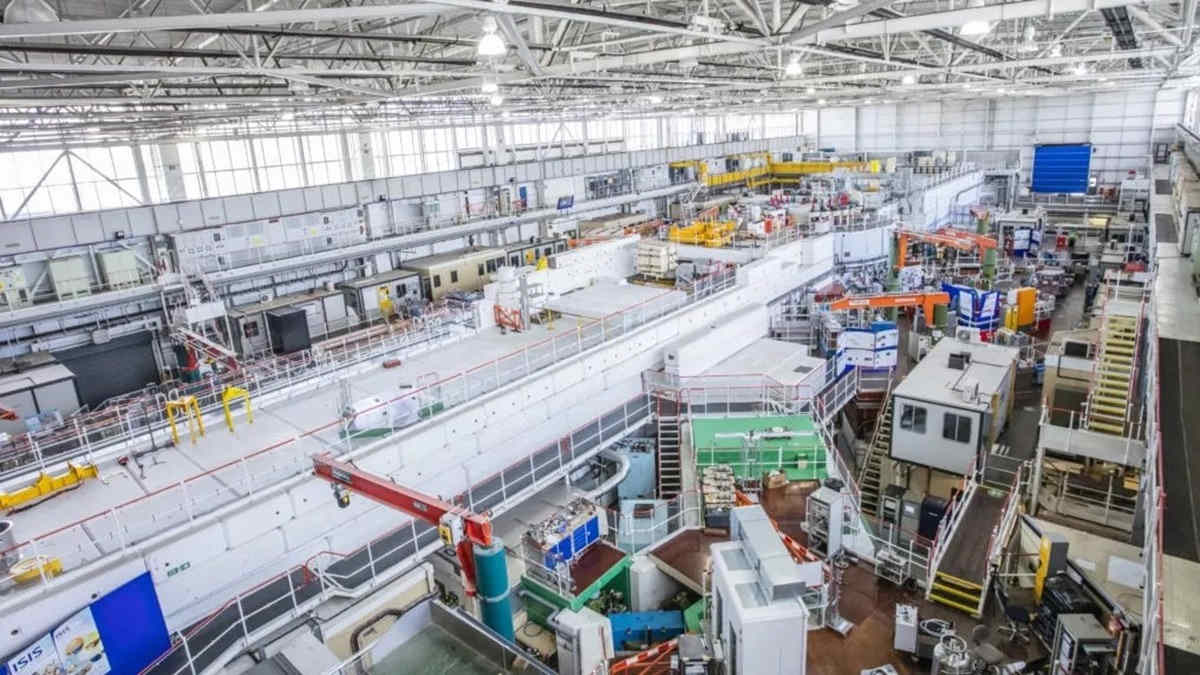A new powerful type of particle accelerator is being built in the UK which could advance accelerator physics.
Particle accelerators currently use protons, electrons and ions to collide matter and probe its composition. Such experiments have recently led to the discovery of the “God particle” the Higgs boson.
These accelerators are used to measure the chemical structure of drugs, treat cancers and manufacture microchips.
But there are other particles which could be used, if only they would bend to physicists’ will.
An example is the muon – the heavier cousin of the electron. Muons and electrons are both part of the lepton family of particles in the Standard Model of Particle Physics. This means they are not affected by the strong nuclear force which binds the particles of the atomic nucleus. Muons and electrons have the same charge, but muons are 207 times heavier.
Muon accelerators would be smaller and cheaper but promise to access higher energies than current particle accelerators, potentially accessing physics beyond our current theoretical models.
The challenge has been getting muons to congregate in a small enough space that they can be accelerated in a concentrated beam.
New research published in Nature Physics reports that physicists led by a team at Imperial College London successfully tested a key technology in the building of a muon accelerator.
As part of the Muon Ionization Cooling Experiment (MICE) collaboration, the researchers developed on 2020 research which showed that ‘cooling’ the muons using magnetic lenses and energy-absorbing materials had successfully shifted muons to the centre of the beam.
The new analysis examined the shape of the beam and the amount of space it occupied. They found that the beam’s shape was made more appropriate for particle collider experiments through the cooling process. The muons travelled in a more organised manner.
“This is an important result that shows the MICE cooling performance in the clearest possible way,” says lead researcher Dr Chris Rogers from the Science and Technology Facilities Council (STFC) ISIS Neutron and Muon Beam facility at the STFC Rutherford Appleton Laboratory in the UK.
“It is now imperative that we scale up to the next step, the Muon Cooling Demonstrator, in order to deliver the muon collider as soon as possible.”
For current accelerators, size matters. The larger the collider, the more powerful, and therefore the more physics can be gleaned from its experiments.
The gold standard for particle accelerators is the Large Hadron Collider (LHC) at CERN on the Swiss-French border. The 27-kilometre-circumference collider is the largest in the world and made headlines with the first experimental proof in 2012 of the Higgs boson.
But already the limitations of the LHC are evident and there are discussions about building a collider nearly 100km long.
A muon collider, however, would be able to reach the same effective energies within a much smaller space.
“Our proof-of-principle is great news for the international particle physics community, who are making plans for the next-generation of higher-energy accelerators,” says first author of the new study Dr Paul Bogdan Jurj from ICL. “It is an important development towards the realisation of a muon collider, which could fit into existing sites, such as FermiLab in the United States, where there is a growing enthusiasm for the technology.”





















Discussion about this post